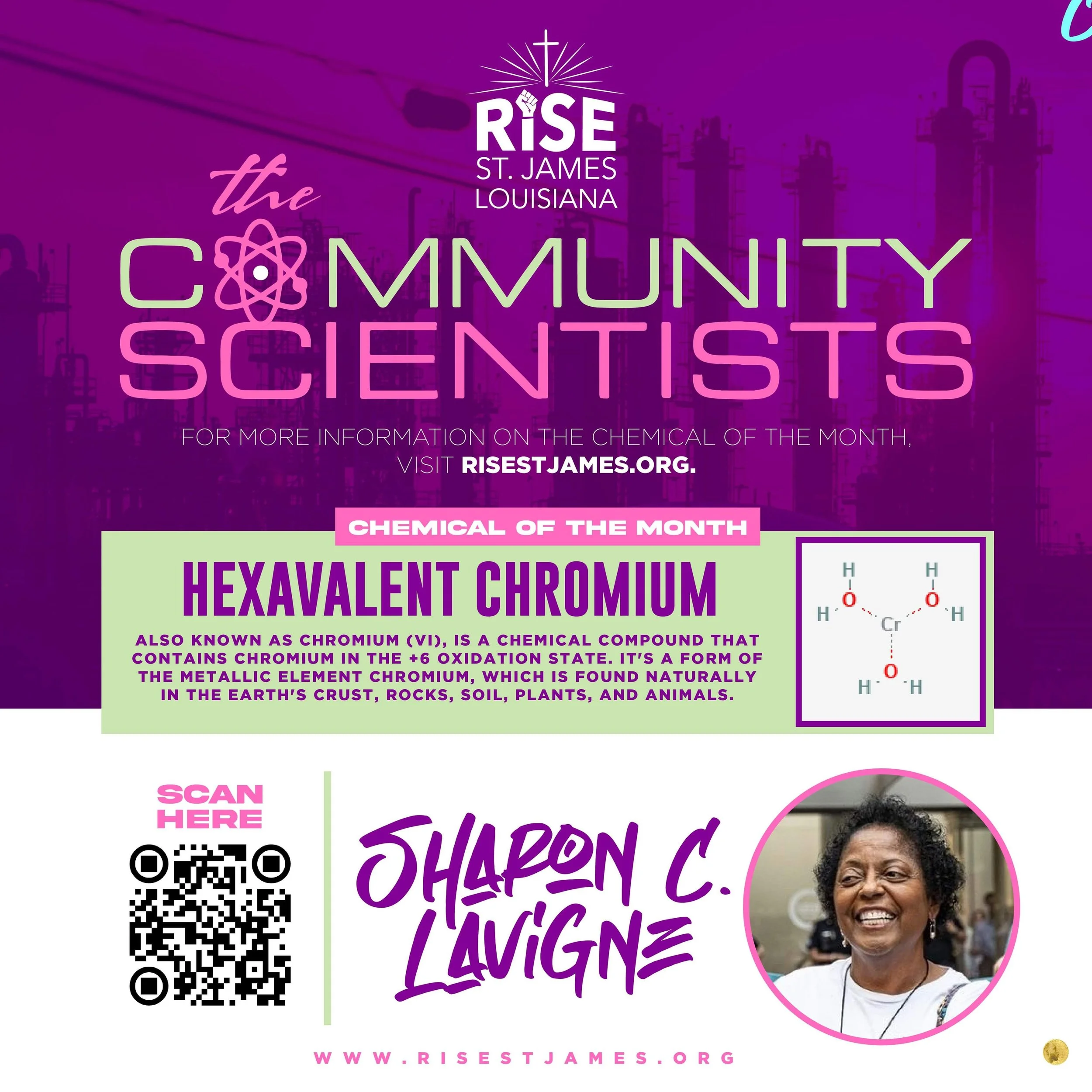By Caitlion O. Hunter, Esq.
A service program of RISE St. James; Caitlion O. Hunter, Esq.; Tim Schütz, PhD Researcher, Anthropology University of California, Irvine; and The Community Scientist (TCS) Research Team
Picture it- a gleaming, red, classic hot rod zipping down old Route 66. While these cars of decades past may look cool, with our increased knowledge and technology, we know now we can do much better on safety. A lack of seatbelts and airbags meant those cars caused serious injury or death in even minor collisions. The leaded gasoline these hot rods guzzled poisoned generations of Americans from the lead-ridden fumes. And, surprisingly the gleaming bumpers, made of chrome 6, were hazardous as well. Chrome 6, also known as hexavalent chromium and commonly abbreviated as Cr(VI), is a highly toxic form of the element chromium that causes serious harm too human health if inhaled or consumed through drinking water.
When it is heated to very high temperatures, the generally safe chromium can convert through oxidation to the dangerous hexavalent form. Workers who weld stainless steel or apply chrome plating are exposed to Cr(VI) in these industrial processes. Hexavalent chromium is used and produced across several industries, including dyes, metalworking, leather tanning, scrap metal recycling, and the burning of fossil fuels. Across Louisiana, the parishes with the highest emissions of Cr(VI) in 2023 were Calcascieu (631.6 pounds), St. Charles (299.3 pounds), and St. Bernard (249.4 pounds). Koch Methanol’s proposed expansion would cause it to emit 30 pounds per year of Cr(Vi). While this may seem like a small amount, hexavalent chromium is water soluble, therefore it can easily contaminate soil and drinking water.
There are many pathways that hexavalent chromium can damage the human body. Consuming water polluted with Cr(VI) through polluted water is toxic and carcinogenic to the GI tract, and there is evidence that it is also harmful to the immune system and male reproductive system. Acute, or short-term, exposure to Cr(VI) through the air can cause irritation to the nose, coughing or wheezing, rashes, or eye irritation. Chronic, or long-term, exposure through the lungs is linked with respiratory issues, ulcers, and lung, nasal, and sinus cancers. Workers who are exposed to airborne Cr(VI) on the job can develop nasal septum perforations, impaired lung function, and other respiratory effects. Long term exposure through the skin can also lead to an allergic reaction which causes swelling and an itchy, crusty rash every time the skin comes in contact with Cr(VI). Children under the age of 30 months (or 2 ½ years) are more susceptible to harmful effects of hexavalent chromium in drinking water. Cr(VI) can also be dangerous when it enters the body in combination with other chemicals. Several studies have shown that exposure to a mix of hexavalent chromium compounds and other chemicals can cause damage to DNA.
The workers, designers, and manufacturers of the classic cars of the past didn’t always know the danger these vehicles posed. It took time for researchers, scientists, and activists to come up with data that showed that changes were needed. When the petrochemical plants that line Cancer Alley today were first constructed, we likewise didn’t know all the health and environmental hazards they posed. But today, with all our knowledge of the hazards of the chemicals, like hexavalent chromium, that they produce and emit, it’s up to us to design the industries of the future which will be safer for everyone.
HOW TO REDUCE THE NEED FOR HEXAVALENT CHROMIUM:
Choose clothes that are dyed with plant-based materials. Artificial dye plants use heavy metals like chromium to produce pigments, which then pollute our air and water. The dye production is hazardous to the workers, too.
A 2018 study of tattoo inks found that 90% of the inks tested contained hexavalent chromium in amounts above the safe level allowed in the European Union. If you are planning a tattoo, ask your artist about the safety testing that their brand of inks go through. For more information, check out https://earthjustice.org/article/what-i-wish-id-known-before-getting-a-tattoo
If your business uses chrome plating, look into the new thermal spray and vacuum depositing methods as alternatives.

